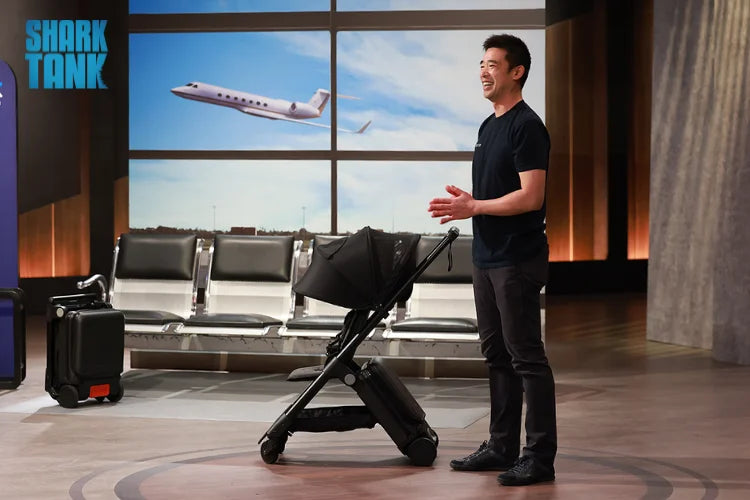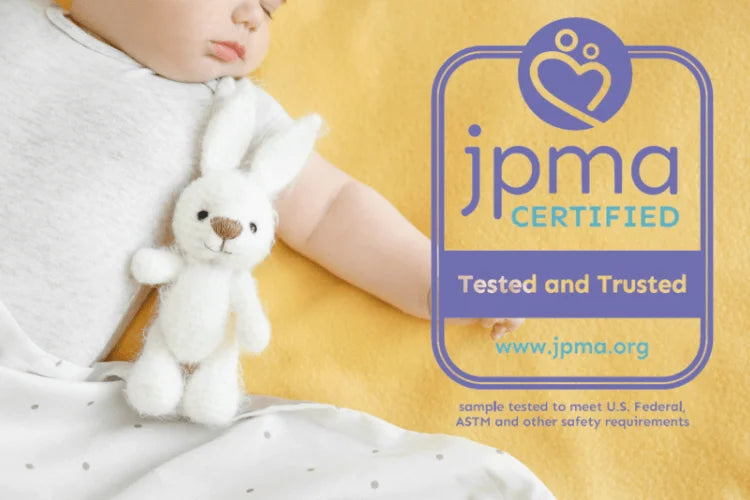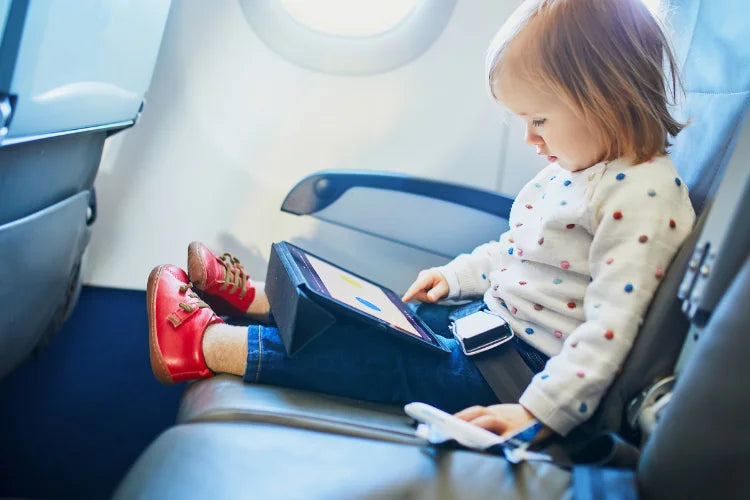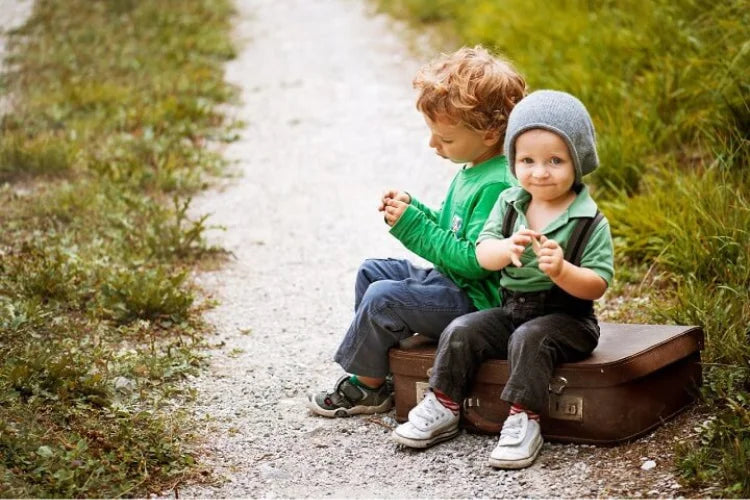You can also read here for the best FAA approved car seats.
If you are traveling with a stroller, read here for information on flying with a stroller.
Not sure whether your stroller can be brought on the plane as carry on? Read here for 86 airlines carry on size requirements.
Table of Contents
Ways to Fly with Your Car Seat
There are various ways on how to bring your baby's car seat whenever you are flying with them. The three options below can help you decide which is the best option for you and your child for your next out-of-town trip.
Check In at the Counter
Most airlines allow you to check in two baby items such as a car seat and stroller for free. Instead of paying additional baggage allowance, you can bring these items during your family trips abroad without spending more.
Also, it is important to ensure that the car seat is wrapped properly to prevent damage doing transportation. It is better to keep it secured and wrapped instead of risking it. In fact, many airlines will request your car seat to be wrapped, even if it is in a garbage plastic bag.
A car seat is an item that can be used for years. Hence, keeping it in mint condition is ideal. The last thing you want would is to receive a damaged car seat at your destination due to poor handling from ground staff.
This does happen so avoid being one of the horror stories.
Gate Check
Another option is to gate-check your child's car seat. This is an option if you want less rough handling of your travel car seat.
Do note that this option will require you to hang on to your infant car seat or convertible car seat until you board the plane. That means you will have to pass security with the car seats and bring them all the way to the gate.
If you already have a lot of hand luggage, this option may add more stress to your time at the airport. However, we do have an article that shows you how to carry car seat through the airport.
Once you are at the gate, speak to the ground staff and they will assist with the procedures to organize for your child car seat to be placed in the hold.
In the hold means you will leave your child car seats at the door of the plane prior to boarding the plane. Staff will then place your car seats into the belly of the plane for storage.
Some airports will return your car seat upon arrival of the plane whereas some airports will require the car seat to be retrieved at the baggage claim area.
If you are not planning on using a child restraint system for your child during the flight, it is highly advisable to check in your car seats along with your check-in baggage.
Credit: bravefamilytravel
Bring Your Car Seat on Airplane
You can bring your travel car seat onto the plane when you have purchased an extra seat for your child. If this is the case, make sure you check that your car seat is one of the FAA approved car seats as not all car seats are equal.
It is a rule that anyone bringing travel car seats on the plane will require to bring an FAA approved car seat.
FAA approved car seats will have an extra sticker affixed to them "This restraint is certified for use in motor vehicles and aircraft".
If you have decided to use car seats on the plane, make sure you choose the right seats as well. Understand that car seats are not allowed in the emergency exit row. Most airlines will stipulate that car seats are to be used on window seats. This is to ensure that the path to the aisle is not blocked. Middle seats can be used if required.
In the event you brought your own seat and have difficulty installing any of your car seats, do not hesitate to request help from the flight attendants. They will be more than happy to assist you to ensure a smooth flight.
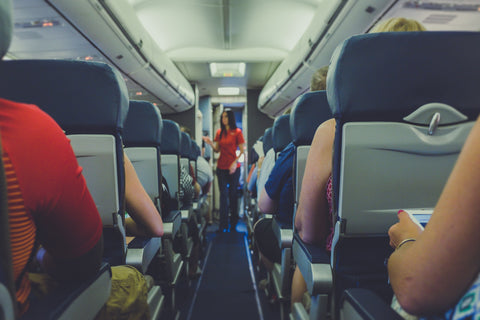
Are Car Seats the Safest Way For Infants To Fly?
FAA (Federal Aviation Authority)
The Federal Aviation Authority (FAA) advises that the safest way for an infant under the age of 2 to travel on a plane is with the use of an approved child restrain system (CRS), not on a parent’s lap. They explain this is because a parent’s arm is not a suitable restraint and cannot protect the child against unexpected forces such as turbulence.
An FAA approved car seat provides this level of safety for a child, the same that an adult gets when they sit in a standard plane seat with a seat belt.
EASA (European Aviation Safety Agency)
The European Aviation Safety Agency (EASA) also advises that infants under the age of 2 years need to be secured on their parent’s lap with a special infant safety seat belt. Many Australian, European, Middle Eastern, and Asian Airlines provide infant lap belts for babies under 2 years old when traveling as a lap infant.
They advise that this is a necessity, but using a travel car seat is a safer alternative. The EASA support that infants using child car seats for flights provides the infant with the same level of protection that is offered to an adult sitting in their own empty seat.
The EASA also indicates which car seats are the safest and most secure for young passengers especially those under 2 years old.
ICAO (International Civil Aviation Organization)
International Civil Aviation Organization (ICAO) provide similar guidelines to the FAA and EASA as they also advise that a child sitting in their own seat in a child car seat is the safest way for them to travel by air.
A CRS (Child Restraint System) provides the child their own seat and protection in the event when it is not possible for a parent to hold the child safely on their lap, for instance during unexpected turbulence.
Research has shown that infants and children are at a higher risk of sustaining injuries when not properly secured in a suitable restraint device. They mention to only use certified devices for aircraft as devices that are not designed for aircraft are detrimental to the child's safety.
Can You Bring a Car Seat on a Plane?
Yes, you can bring a car seat with you on the plane as long as you have purchased an extra seat for your child.
If your flight has an empty seat, you may be able to bring your car seat on the plane. However, you will be taking your chances and you may end up needing to gate check your car seat.
Research has shown, and the FAA advises, that when you travel with your little ones, having an airplane car seat is the safest way for them to fly because it provides them with their own seat and a better restraint than a parent holding the child on their lap.
Can You Bring a Car Seat on a Plane for Free?
Yes, there is no additional charge to bring a car seat on the plane. However, you will be required to purchase an extra seat for your child in order to use the car seat on the plane.
How Much Does it Cost to Fly with a Car Seat?
In general, most airlines allow you to check a stroller and a car seat for free. This can be done either at the check in counter or at the gate.
If however, you are planning to bring a car seat on the plane for your infant, you will have to purchase an extra seat. The cost of purchasing a seat for a child under 2 years old is generally between 60-80% of an adult fare.

Do Car Seats Count as Checked Baggage?
No, a car seat does not usually count as a piece of checked baggage. You can drop off your car seats at check-in or at the gate check.
Do Airlines Charge for Checking a Car Seat?
Fortunately, most airlines do not charge for checking a car seat. It is free of charge when you are traveling with your child and you are generally allowed to check in 2 baby items for free.
How Do You Pack a Car Seat for Checked Baggage?
Pack in the original box
Do not throw away your car seat box after purchasing your car seat. You can pack your car seat using the original box to protect it properly whenever checking in your car seat.
Use a well-padded car seat bag
Having a well-padded bag to put your car seat in can prevent it from scratching and getting damaged during handling.
Are There Any Risks of Checking Your Car Seat?
Yes, there are some risks that you may eventually experience whenever you opt to check in your car seat just like the ones that you usually experience when you check in your luggage. Some of these include the following:
Car seat can be damaged
During transfers and lifting your belongings, a car seat, just like a piece of normal baggage, can be damaged. It may have scratches and dents if not handled and wrapped properly.
Car seat can be lost
A lost car seat is one of the scenarios that you do not want to experience whenever you travel. This just adds unnecessary stress to your trip.
No safe way to restrain your child on the plane
Having a car seat with you on the plane gives your child their own personal space and restraint straps to keep your baby in place.
Does Gate Check In a Car Seat Void the Warranty?
Check the warranty of your particular car seat to understand what exactly is included in the cover.
The warranty generally does not cover any damage from airline travel. You may have to purchase additional insurance to cover your car seat.
If you do get a damaged car seat or if your car seat is lost by the airlines, make sure you file a report immediately when you are at the airport. Every airlines have its own policy and from experience, some airlines do provide compensation for damaging or losing your baggage.
Britax the car seat brand "recommend gate-checking the seat if you do not plan to use this on the flight as the warranty does not cover airline damage.” Gate checking the car seat reduces the risk of damage as there is less handling of your car seat.
However, even if you gate check the car seat, it may still be returned via baggage claim where damage incidences could still occur.
Can You Gate Check a Car Seat Without a Bag?
Yes, you can check a car seat without a bag. However, there are risks that you are willing to bear in case you are planning to do this.
Some of these include a damaged car seat once you pick it up in the baggage claim area. There is no assurance that your car seat will not have any signs of damage or marks after it is handled by airport personnel.
Even if a bag is not required to check a car seat, you may still want one.
Can I Use My Day-to-Day Car Seat on the Plane?
It depends. The only way that you can use your regular car seat on your flight is if it is approved for air travel. There is usually a label or indicator that it is good to use in airplanes.
However, if you cannot locate this sticker of approval anywhere in your car seat this means that you will have to get a new one that is an FAA-approved car seat or approved for air travel use.
How Do You Install a Car Seat On A Plane?
Here is a quick guide on how you install a car seat on a plane based on a general setup provided by manufacturers:
1. Determine the seat dimensions of your airplane seat and the car seat that you will bring with you. This will already tell you beforehand if it fits well or not.
2. Opt for a middle seat or window seat. A car seat is not recommended to be used in an aisle seat or any seat that is near the emergency exit rows.
3. Loosen up the seatbelt and lift the armrests up.
4. Place the car seat on the separate seat that you purchase for your child.
5. Place the seat belt through the belt path on the back of the car seat.
6. Do not forget to tighten the lap belt and press it down on the seat to fit it perfectly.
7. Check whether there are any loose sides or the setup is not stable. This will tell you if you need to secure the car seat again or if your child can now move to their designated seat for the flight.
8. After that, you will just have to lower the armrests and buckle up your child. Always check your child from time to time in he or she is still comfortable and secure.
Can You Use a Rear-Facing Car Seat on the Plane?
Yes, you can use a rear-facing car seat on the plane as long as it is FAA approved and your child fits the manufacturer's recommendation on age, weight and height.
Just like a forward-facing car seat, a rear-facing car seat must be within certain dimension limits so the car seats can fit the plane seats securely and safely.
Can You Use Car Seats in Business or First Class?
If you are flying in business or first class, most airlines do not allow car seats to be used in Business or First Class. This is because the configuration of the seats is different compared to economy seats and car seats will not secure safely the same way.
Please check with your airlines before purchasing your ticket so you can co their requirements.
Can You Use a Booster Seat On the Plane?
No, you cannot use booster seats on planes because booster seats require lap-shoulder seat belts to place your child securely on their seat. It is not your typical travel car seat.
A booster seat is designed to lift your child up to reach the seat belt of your car, however, this is not applicable to a plane as it has a lap belt instead.
It is important to note that you can use highback booster seats that come with a five-point harness in the planes.

Have Confidence Flying with Car Seat
Hope that by now you can appreciate that flying with a car seat is not all that difficult. It comes down to preparation and planning when you bring your own car seat.
Understand that checking in car seats have its advantages and risks. It will on longer be an issue once you have addressed the risks.
Bringing a lightweight car seat travel system on the plane is the safest for your infant but it does come at a financial cost. Figure out what scenario works for you and enjoy planning your vacation.
Read here for information on traveling with carry on strollers.
Read here for information on car seats and stroller travel bags.






